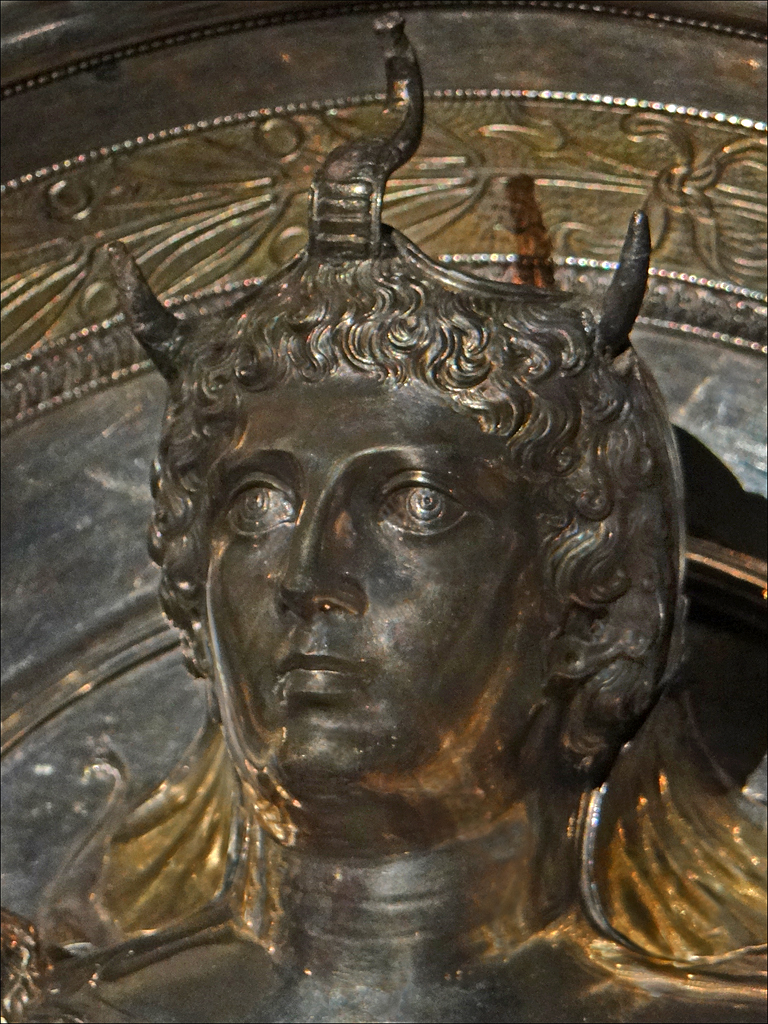No woman from history is more famous than Cleopatra. Her love affairs with Julius Caesar and Marc Antony are the very definition of legendary. But ask anyone about her daughter by Antony, and you will get a blank stare. This book is about that person, Cleopatra Selene.
Since there are few definite and reliable sources for her life, author Jane Draycott (University of Glasgow) is at her creative best filling in the blanks.
Cleopatra Selene (selene is a word for the Moon) had a truly eventful life. After her mother committed suicide, the first emperor of Rome, Augustus, took her back there to be included in a triumphal parade for his victory over Antony & Cleopatra. Fortunately, he was benign in his victory, and allowed Selene to be raised with her half-siblings. These were children by the marriage of Antony and Octavia, the sister of Augustus. He therefore portrayed himself to the public as a kindly family man.
Draycott gives us a very fine idea of what life was like for the young Selene. “She does seem to have acquired some of Antony’s household staff, and many of them would remain with her for the rest of their lives.”
Which brings us to the second half of her short life (she died at age 35, in 5BCE). Also in gilded captivity in Rome was the son of the deceased King Juba of Mauretania, which covered a wide area of northern Africa from Morocco to Egypt. Augustus decided to install the son as King Juba II, with Selene as his wife. Wary of potential treason, he obviously monitored both of them for some years, and came to trust them. That trust was not misplaced as Juba II ruled well for half a century, the first 20 of those years with Selene. Thus, from a captive Princess of Egypt, Selene became a Queen! A life story worthy of a Hollywood film.
Cleopatra also gave birth to twins, allowing Draycott to widen her exploration. In fact, she examines all the children born to Julius Caesar and Marc Antony. Most just disappeared from the historical record, but we do know that Augustus ordered the murder of Caesarion, the son of Cleopatra and his uncle Julius.
Draycott’s prose is engaging. We get a good sense here of the palace inhabited by Juna and Selene in the city of Caesarea (renamed in honour of Augustus Caesar from its original name of Iol). Even the palace furniture gets attention here: it was largely made of citron wood, the most sought-after wood in the Empire. Draycott tells us that Cicero bought a citron wood table for the truly astronomical sum of 1,200,000 sesterces. Draycott does not relate that to what a Roman would typically make, so I looked it up. To put this in perspective, it was equivalent to the pay of a Roman soldier for 125 years!!
Draycott has visited many sites associated with the royal couple in north Africa, including the massive mausoleum in modern-day northern Algeria which luckily has escaped destruction. Nothing of the royal pair remain inside, as it was plundered long ago. The book is very well illustrated, with 18 images on a set of glossy plates, and many others throughout the book. The image of the mausoleum is given a 2-page spread in the plates. While none of the plates are in colour, the image with this review is included in the book.
The Index is good, but not perfect. The court poet Crinagoras is mentioned several times, but his appearance on page 194 did not make it to the Index. He wrote a poem to eulogise Selene shortly after her death, and it bears repeating here. It is one of the loveliest ever written, but has been read by very few people alive today:
The moon herself, rising at early eve, dimmer her light, veiling her
mourning in night, because she saw her namesake, pretty Selene,
going down dead to murky Hades. On her she had bestowed the
beauty of her light, and with her death she mingled her own darkness.
Draycott writes that “Since Crinagoras’ words refer to a lunar eclipse, it is possible to use astronomical information to get a sense of when her death could have occurred.” The date of 23 March in 5 BCE is the date that was calculated.
A truly fascinating book that fully explores the genealogical placement of Selene, her contemporaries, and her descendants, I recommend this book for anyone interested in Egyptian, Roman, Middle Eastern and African studies in ancient times. But you don’t have to be a Classical expert to enjoy it, so it should hopefully gain a wide readership.
Image: Cleopatra Selene II wearing an elephant scalp, raised relief image on a gilded silver dish, from the Boscoreale Treasure, 1st century BC. Courtesy Wikimedia Commons
Cleopatra’s Daughter: From Roman Prisoner to African Queen is by Liveright Publishing (W.W. Norton & Co.). It lists for $32.50.
